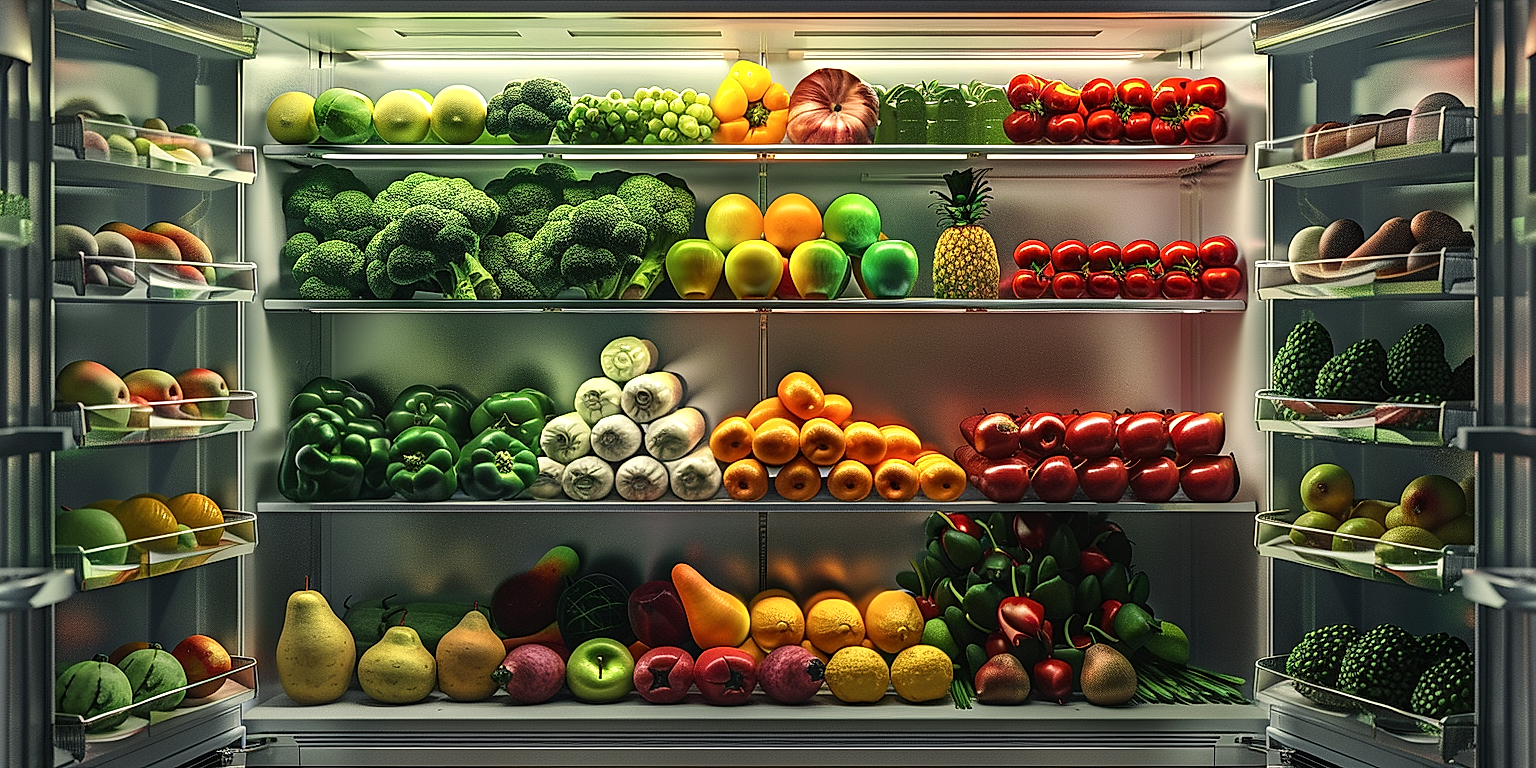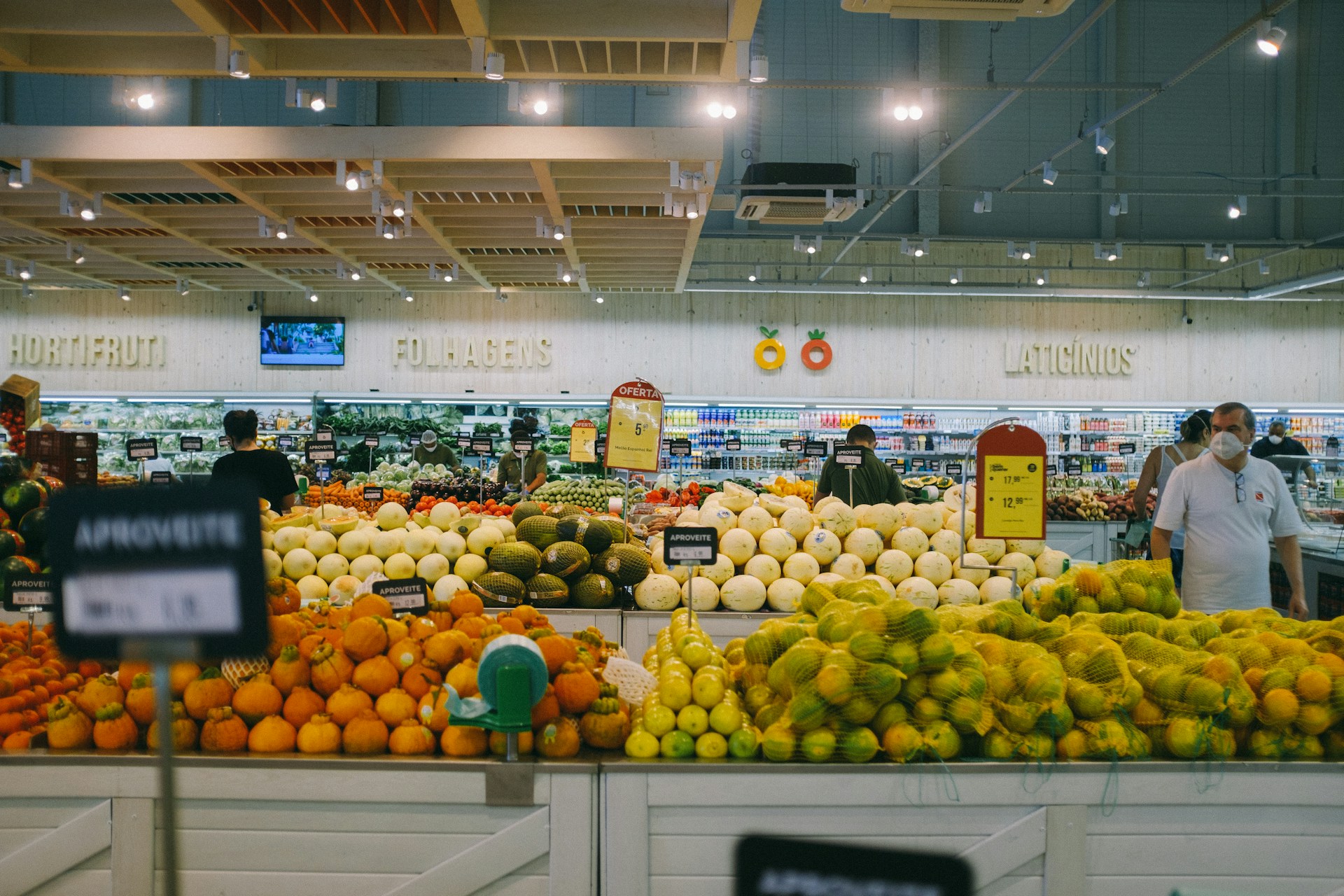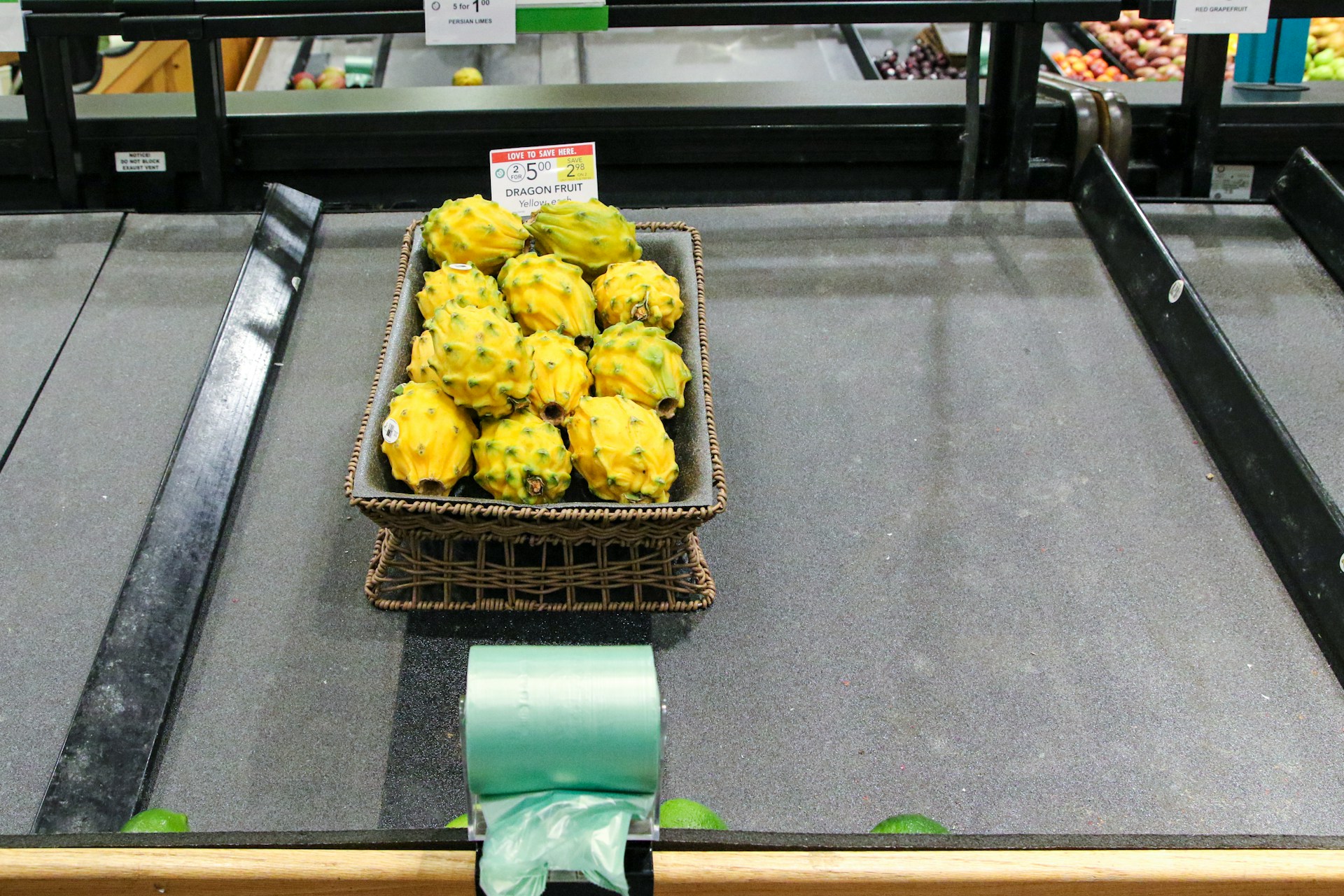A fresh and vibrant produce display not only entices customers but also increases the longevity of the fruits and vegetables.
It is crucial to understand and implement effective display techniques to enhance visual appeal and minimize waste.
These methods are not simply about aesthetics; they ensure optimum quality and freshness for extended periods.
Ineffective techniques may result in quicker spoilage, unnecessary losses, and dissatisfied customers.
Mastering the appropriate techniques can reduce waste, improve return on investment, and contribute to a more sustainable food retail business.
Through this article, we aim to provide practical and effective strategies to optimize your produce display for maximum shelf life.
Display Tips To Maximize Produce Shelf Life
1. Keep fruits and vegetables separate to avoid over-ripening.
One of the key factors for effectively maximizing the shelf life of your produce is to keep fruits and vegetables separate.
Many people often store fruits and vegetables together in the same drawer or basket, which may trigger hastened ripening or rotting process.
This is largely due to the fact that many fruits release a natural gas, ethylene, that often accelerates the ripening process of other produce around them.
While ethylene posing no harm to your health, its effect on other fruits or vegetables can significantly reduce their freshness and longevity.
Therefore, it is highly recommended to store your fruits and vegetables in separate compartments or baskets to prevent over-ripening caused by ethylene.
Cruciferous vegetables like broccoli, cabbage, or brussels sprouts, for example, are known to be highly sensitive to ethylene and can experience damage if stored with fruits that emit this gas.
Contrarily, storing fruits with each other can also be a concern. For instance, apples produce a significant amount of ethylene, which can lead to the rapid ripening of nearby fruits such as bananas or peaches.
Asides from ethylene concern, storing fruits and vegetables separately also helps maintain their specific storage requirements in terms of humidity and temperature.
While some fruits and vegetables require cool, humid environments, others thrive better in slightly warmer, drier conditions. Having them stored separately allows for optimal storage conditions.
Moreover, separating fruits from vegetables could act as a deterrent for cross-contamination which may be caused by storing different types of produce together.
Generally, it is preferable to store fruits and vegetables in a cool, dark, and well-ventilated area to preserve their freshness as long as possible and this even more critical when keeping them separately.
Remember that the goal here is not pure separation but effective storage. Having a systematic approach to storing your produce separately can help maximize their shelf life.
One such method might be leveraging the separate crisper drawers found in most refrigerators, one for fruits and the other for vegetables.
Implementing a strategic and conscious approach to how you store your produce can drastically help extend their shelf life, ensuring you get the best quality fruits and vegetables for longer period.
To summarize, one of the most fundamental yet crucial tips to maximize your produce’s shelf life is to simply keep your fruits and vegetables separate.
2. Store leafy greens in a sealed, moisture-free container.
Leafy greens are not only primary components for various nutritious salads and sandwiches, but they are also quite delicate and hence require specific attention when it comes to storage.
These vegetables, be it lettuce, spinach, kale, or Swiss chard, tend to lose their crispness quickly, if not stored properly.
The optimal method to preserve their original freshness involves placing them inside a sealed, moisture-free container.
Any container purposed for storing leafy greens should be completely airtight and free from any traces of moisture, as excessive humidity can rapidly degrade the condition of these vegetables.
Properly using these containers will significantly extend the shelf life of leafy greens, maintaining the appealing texture and taste that attract customers.
The containers should be kept in the refrigerator, ideally in the crisper drawer, which is designed for vegetable storage due to its humidity control capabilities.
However, before transferring these greens into storage, you need to ensure that they are dry.
Surfaces of these veggies should not be wet as trapped moisture speeds up the decomposition process, leading to a quicker loss of freshness and quality.
Do not wash leafy greens before storing them; only wash right before use.
Maintaining a moisture-free environment within the storage container is important because it prevents bacterial and fungal growth, thereby prolonging the greens’ lifespan.
This, in addition to keeping the temperature steady and cool, inhibits natural degradation and effectively maintains the vegetables’ vibrancy and nutritional value.
It’s also essential to remember to avoid overcrowding the container.
Allowing some air circulation within the container is beneficial as it prevents certain areas from becoming damp and triggering decay.
If you observe any signs of spoilage, immediately remove the affected parts to protect the remaining greens.
Remember, storing your leafy green vegetables properly not only maintains their quality but also reduces waste, thereby saving money and resources.
3. Place ripe items at the front, unripened at back.
One of the greatest challenges a store can face is maintaining the freshness of their produce, and this can directly impact the perception of quality for the consumer.
When consumers perceive the products as fresh, they are more likely to purchase additional items from the produce department, thereby increasing sales for the store.
A crucial factor contributing to the freshness and subsequent sales of produce is the placement of ripe and unripe items.
The positioning of produce in a way that ripe items are placed at the front and the unripened ones are at the back can drastically enhance produce shelf life.
The rationale behind this strategy is that ripe products need to be sold first, to prevent them from over-ripening and going to waste.
Contrastingly, unripe products possess a longer shelf life and can thus be placed at the back, allowing them the time they need to attain an optimal stage of ripeness.
This system of rotation is often referred to as ‘First-In, First-Out’ or FIFO in the retail industry.
FIFO ensures a healthy turnover of produce and minimizes spoilage by selling the items that are closest to their peak ripeness.
Apart from preventing wastage, this method also maintains the visual appeal of the produce section as it discourages the presence of rotten or overripe fruits and vegetables that can be off-putting to consumers.
Moreover, placing unripe items at the back gives them the chance to ripen perfectly by the time they reach the front of the shelf and subsequently, the shopper’s basket.
This practice is particularly crucial when dealing with produce like bananas, avocados, peaches, and other fruits and vegetables that continue to ripen after being harvested.
Following this strategy not only enhances shelf life of a store’s produce, but also elicits a customer’s trust in their products’ freshness and quality.
After all, the appearance of fresh and ripe produce at the front of the store is the first impression consumers receive upon entering the store.
This constructive first impression often translates into increased sales and helps build a loyal customer base that appreciates the store’s commitment to providing fresh, high-quality produce.
In conclusion, proper orientation and placement of ripe and unripe items plays a vital role in extending the shelf life of produce, ensuring quality, and boosting sales.
4. Avoid washing produce until right before use.
One of the most essential display tips to maximize produce shelf life is to avoid washing your fruits and vegetables until right before you’re ready to use them.
When you wash produce, you inadvertently introduce moisture, which can expedite the produce’s degradation.
This is particularly true for produce items with a high water content such as lettuce, peaches, grapes, and berries.
These fruits and vegetables have delicate skins, and when you wash them, the water can seep into the skin’s pores or create a conducive environment on their surface for mold and bacteria to thrive.
Keeping these items dry until the last moment ensures they retain their freshness for a longer duration.
It is important to note that the situation is slightly different for root vegetables like potatoes, turnips, and carrots. We often store these items with a little bit of soil on them because the soil acts as a natural protection and keeps them fresh for a longer time.
However, even for these root vegetables, you should avoid washing them until right before use.
When you display these items, remember to handle them gently and avoid any unnecessary contact with water or other forms of moisture.
Even the moisture from your hands can affect the shelf life of unwashed fruits and vegetables.
The same goes for the inside of your refrigerator; ensure it is completely dry before storing your produce to prevent condensation and other forms of moisture buildup.
Maintaining the right humidity levels in your fridge is also essential for preserving your produce self life.
Most modern refrigerators come with unique drawers (crispers) that allow you to adjust the humidity levels as per the type of produce stored.
Lastly, only cut or chop your fruits and vegetables right before consumption or cooking.
When you cut or chop them, the exposed surfaces will dry out, lose their nutrients, and start to degrade faster.
In essence, the practice of washing, cutting, or chopping your produce only before you’re ready to use it can make a significant difference in maintaining their shelf life and freshness.
5. Rotate stocks regularly to ensure freshness
In the world of retail and food service, the term stock rotation refers to the process through which inventory is managed to ensure that the oldest products are sold before the freshest ones.
This system, also known as first-in, first-out or simply FIFO, is instrumental in preventing food spoilage, particularly for perishable items such as produce.
In the context of maximizing the shelf life of produce, a consistent and thoughtful application of this stock rotation system is vital.
The fruits and vegetables that are first to arrive in your store should be the first ones to be displayed and sold, ensuring that nothing lingers long enough to deteriorate and reduce quality.
Regular stock rotation also serves to maintain visual appeal of your produce display.
Over-time, fruits and vegetables can lose their lustre, even if they are still perfectly edible, this loss of freshness can deter customers from purchasing.
By regularly bringing forward the freshest items, you not only enhance the attractiveness of your display, but also help protect the investment you’ve made in your produce inventory.
Moreover, regularly rotating your stock helps you to keep a realistic and accurate inventory.
If items are left unpurchased to the point of spoilage, you may be at risk of over-ordering because you believe you have less stock than you actually do.
The efficiency of your ordering process, and by extension, your cost efficiency, can be significantly improved by regular stock rotation.
Furthermore, frequent rotations can give a chance to remove any damaged or spoiled produce promptly, which could contaminate the rest of the stock if left undetected.
Moreover, rotating stocks ensure that you maintain consistently high-quality offerings, which could boost the reputation of your retail or food service operation.
If customers can trust that they will always find fresh, high-quality fruits and vegetables at your store, they are more likely to become regular patrons.
Therefore, regularly rotating stocks is crucial from both a customer satisfaction and a product waste management point of view.
Last but not at least, it’s also essential to train your staff on the importance of proper stock rotation practices.
Consistency in this area can only be achieved if everyone involved in managing the produce display understands and adheres to the FIFO principle.
Hence, while it may initially require an investment of time and effort, regularly rotating your produce stock is a sure way to protect the freshness and appearance of your fruits and vegetables, enhancing customer satisfaction and, ultimately, your bottom line.
The Bottom Line
Thus, the key points of maintaining the freshness and longevity of your fruits and vegetables lie in the strategic storage and management of produce.
Keeping fruits and vegetables separate considerably prevents over-ripening, while storing leafy greens in sealed containers aid in their longevity.
Furthermore, organizing items in terms of ripeness can help in consuming them at their peak.
Additionally, postponing the washing of produce until immediately before use helps prevent premature spoiling.
Lastly, adopting regular rotation of stocks ensures optimal freshness.
Utilizing these tips can greatly enhance the shelf-life of your produce, leading to reduced waste and a more efficient kitchen environment.




